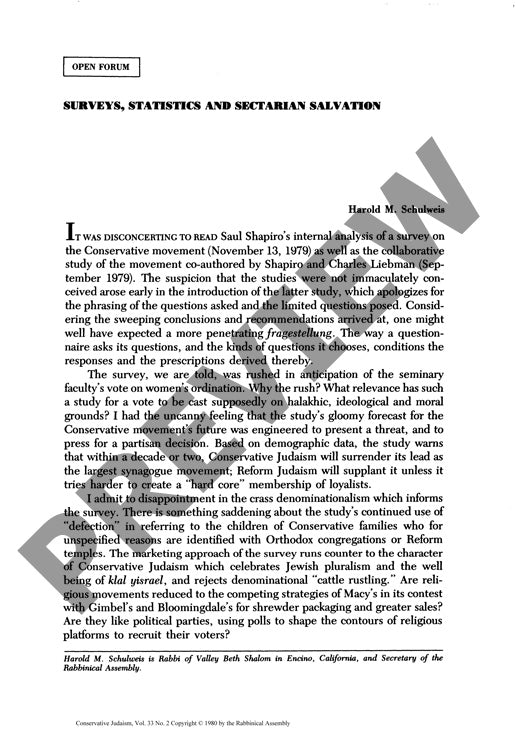Surveys Statistics and Secretarian Salva
Couldn't load pickup availability
Conservative Judaism's institutional response to declining membership in 1979 rested on flawed demographic research that reduced religious movements to mere market competitors. Two influential surveys by Saul Shapiro and Charles Liebman, which predicted Conservative Judaism's decline relative to Reform Judaism, suffered from rushed execution, narrow question framing, and an overly simplistic focus on ritual observance—particularly kashrut—as the primary measure of religious authenticity. Harold M. Schulweis's methodological critique reveals internal contradictions between the studies' predictions regarding ritual practice and denominational loyalty, while highlighting their failure to address the 35% of Conservative children who remain unaffiliated with any synagogue—the movement's largest potential membership pool. The surveys' limited scope overlooked crucial theological, moral, and social dimensions of Jewish religiosity, misrepresenting Conservative Judaism's foundational strengths: its philosophical commitment to historical tradition, moral responsibility, academic freedom, and the embrace of diverse religious expressions within Jewish life.

More Information
-
Physical Description
-
Publication Information
Published 1980
ISBN
-
Publication Credits
Harold Schulweis

